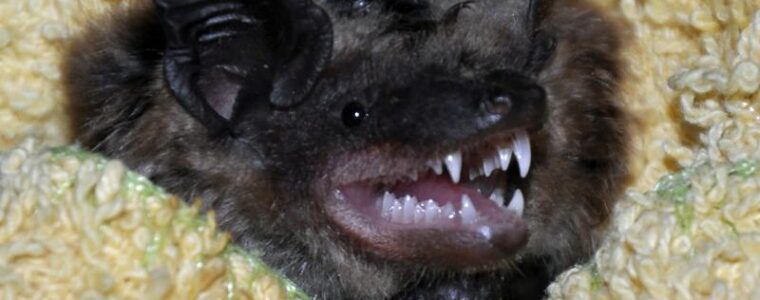
When some people think of wildlife rehabilitation, they only think of the hands-on animal care given and the prospect of that animal being released.
But with these tasks comes the responsibility of helping the person who found the animal and educating them with the information needed to help it. One such opportunity came to us two years ago; it began with the best intentions, but due to bad information and no experience with a wild animal, could have turned out much worse for the finder and the animal.
A woman called us because she found a bat outside unable to fly. She went to her computer and looked up bat rescuers, but, unfortunately, found a number of someone that was no longer involved in rehabilitation. However, this person did not tell her that and proceeded to leave a message as to what she needed to do — but this information was wrong. The woman followed her instructions and brought the bat into the house, which was dangerous for her family. She received no instructions on how to contain the bat properly and placed it in an unsealed box in a closet. When she found our number and called, we told her to first get the box and place it outside, but, as we had feared, the bat was not in the box when she opened it outside! Did it crawl out and hide somewhere on the floor of the closet? Was it able to crawl up the walls of the closet and find a crack to get behind the wall? Or did it crawl out from under the closet door and hide somewhere else inside the house? All this woman wanted was to rescue the bat and keep it safe, but instead she was afraid, mostly because she had small children in the house and was worried they would find the bat and handle it, which would then force rabies testing and possible vaccines of her family.
We then led her in a real-life “Where’s Waldo” hunt to try to determine where the bat would be. For the rest of that day and evening, she took apart her closet, looked under rugs, looked in cracks and crevices, but no bat. We were able to send a volunteer to her house the next day, who climbed through the closet armed with gloves and flashlight, looking in heating pipes and ductwork, behind walls, into rooms where the ductwork led to– but still no luck. Short of actually removing all of her drywall, we had to explain that while there was a chance the bat would come out on his own, it was more likely that he was somewhere behind the wall and would remain there to hibernate until spring, hoping that he would make his way up through the space between the walls to the attic where he would gain access to the outside. But of course she was upset, fearing a bat would pop out of the air and onto her living room sofa.
She then called to frantically tell us that the bat was flying around her living room, and we told her to open windows and doors to let him fly out. There had been no contact with the bat, and her children were always in her sights and were not exposed. It only took moments for the bat to find his way out and up to a nearby tree. But this would have been so simple for all concerned if we only had gotten this call first.
The New Jersey Division of Fish and Wildlife lists licensed wildlife rehabilitators on their website at www.njfishandwildlife.com. Here you can find what county they service, what animals they are licensed for, and, most importantly, find the people that know about that species of animal and will give the correct and appropriate information. The internet is a wonderful tool, but always remember that information can be outdated, vague, or even incorrect. This is especially true when trying to look for ways to feed a baby animal in the spring and finding formulas that have not been used in decades. When you find that number to call, ask for credentials, and we will be happy to provide the answers you need.
Our all-volunteer center is proud of the work we do and the animals and people we are able to help, but we always want to do more. Freedom Center for Wildlife is proud to be able to help fix these situations, in addition to helping and fixing our animal patients. Your support allows us to continue our work.
